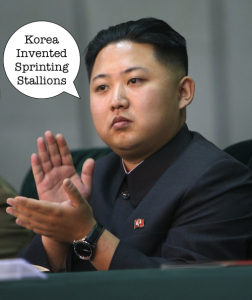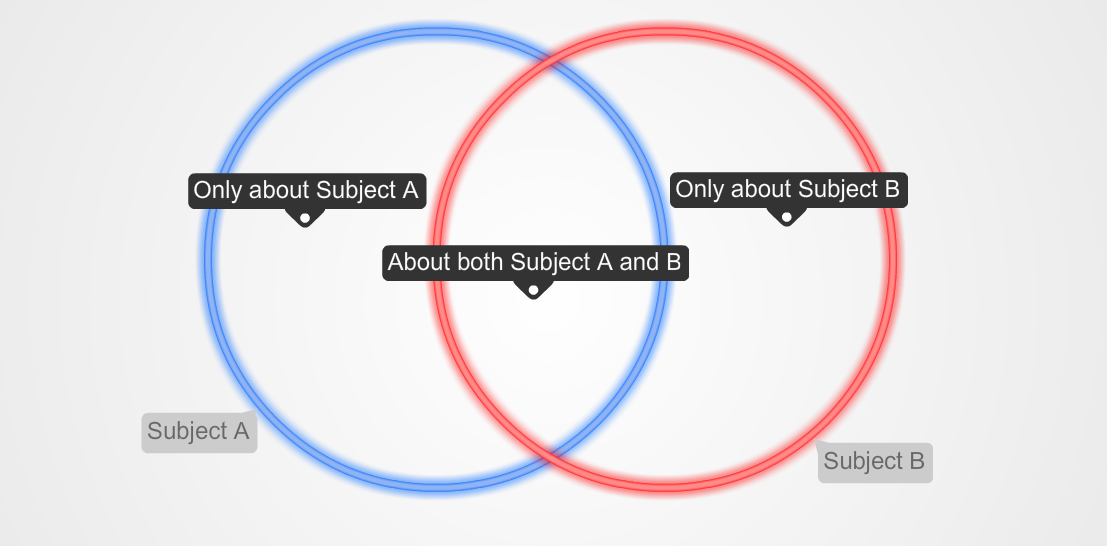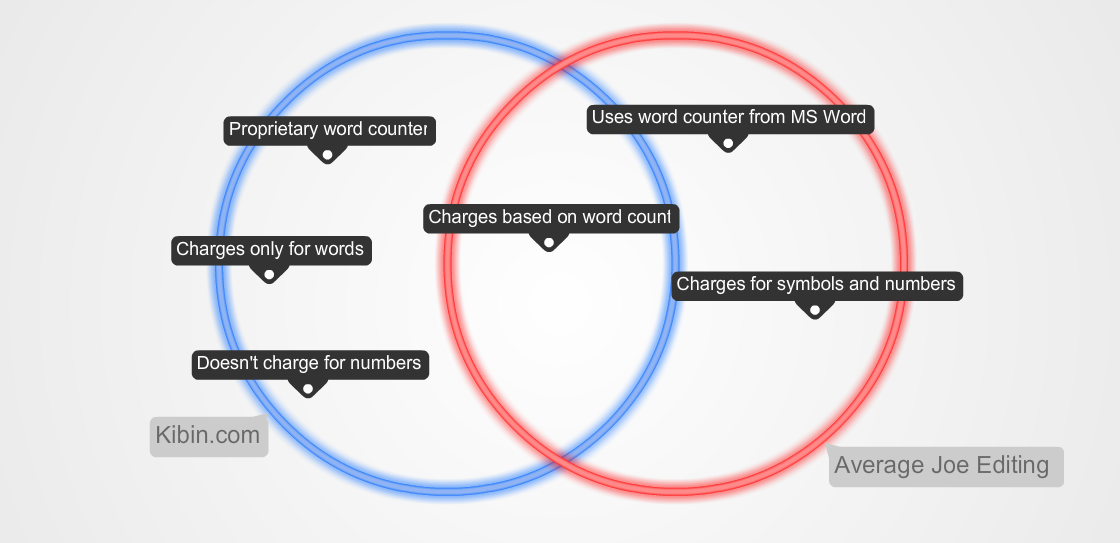Theodore Roosevelt once said, “Comparison is the thief of joy.”
But, don’t let Ol’ Teddy or that compare and contrast essay get you down. Compare and contrast essays are a great way to expand your knowledge on two subjects. And, with a little guidance, they can be fun and easy to write.
Besides, what does Theodore Roosevelt know? All he ever did was invent the teddy bear.
Wait, what? He was president? We let the teddy bear inventor lead the free world? Never mind. Let’s forget I said that. It’s time to learn how to write a compare and contrast essay!
What Is a Compare and Contrast Essay?
First, let’s make sure we all understand the basics of a compare and contrast essay. Rest assured, you will come across this type of paper at some point in your academic career, if you haven’t already. A compare and contrast essay asks you to look at the similarities (compare) and differences (contrast) between two or more items or concepts.
At first glance, this will not appear to be difficult. It may seem easy to look at Vladimir Putin and Kim Jong-un and notice the surface-level differences and similarities.
The compare and contrast essay often asks you to go beyond the surface, to perform a critical analysis of the two subjects, and to begin to understand the underlying tendencies and characteristics. By doing so, you not only better understand the two subjects, but you reveal the concepts and connections, and possibly what makes them the way they are.


How Can I Organize My Ideas?
Depending on the prompt assigned, you may find your mind is overwhelmed by the myriad similarities and differences related to your subjects. Instead of just shoving them all into an essay with the subtlety of a dictator with daddy issues throwing a tantrum, let’s see if we can organize them beforehand.
My favorite organization tool for a compare and contrast essay is the Venn diagram. This writing tool allows you to clearly organize the similarities and differences of two subjects with two simple, overlapping circles.
I suggest you draw a big Venn diagram on a piece of paper and write everything you can think of that fits in the three sections. Once it is packed full of aspects of each subject, you can then think about which ones are the most important to your paper. What do you want to focus on? What interests you about these two areas? Which similarities and differences best relate to the prompt, or the course in general? Which pieces of information support the argument that you are presenting?
For example, if you are comparing and contrasting two novels, you may want to take a look at how the two stories and the characters within them relate in terms of a certain theme. Do the two works support each other on a certain subject? If so, perhaps those aspects are the ones that should be presented in your paper.
Once you have narrowed your focus, you can then identify the points in your Venn diagram that you will include in your paper.
Remember that having fewer points to discuss is usually better. The more you have, the less space you will have for analysis.
On the other hand, if you are able to narrow your focus to a couple of similarities and differences that really highlight the point you are trying to prove, you leave more space for discussion of those points.
How Should I Structure a Compare and Contrast Essay?
I’m all for creativity. If you have a new and interesting angle you would like to approach the essay from, then do it.
In all of my time teaching English, I’ve never lowered the score of a paper because a student was thinking outside the box and intentionally trying something new and different.
Of course, the key word here is “intentionally.” If you don’t know what you’re doing, that’s going to come through in the paper. If you already know how to write a compare and contrast essay, however, then you can be free to let your creativity run wild.
So, what is the easiest way to do it? People may have varying opinions, but in this instance I think it is best to follow the K.I.S.S. acronym. K.I.S.S. stands for…uh…um. What is it again?
Kaleidoscopes Influence Scared Stoners?
No, that’s not it.
Kittens Inspire Sylvester Stallone?
True, but that’s not what I had in mind.
Kardashians Induce Sectarian Savagery?
Perhaps, but that’s another issue.
This is too complicated. I don’t remember. Let’s forget it. What I’m trying to say is, when you are structuring your essay, just keep it simple, you silly goose. I feel like I was so close. Oh, well.
It doesn’t get much simpler than the 5 paragraph essay, and in the case of the compare and contrast essay, it works perfectly. In fact, it lines up with our Venn diagram in an incredible fashion. The 5 paragraph essay includes an introduction, 3 body paragraphs, and a conclusion. The Venn diagram gives us 3 gorgeously clear sections to work with, which will fit nicely into that 3-paragraph-body format.
Will You Give Me an Example of How to Write a Compare and Contrast Essay?
Well, I have some good news for the bold typing friend who lives in my head, and anyone else who may be reading: I will, indeed, give you an example.
Our example compares and contrasts the Kibin.com editing service with the average online editing service. Although there are many similarities and differences, we will focus on just this one for the sake of giving an example.
Introduction
So, the introduction paragraph of your five paragraph compare and contrast essay will, besides introducing your topic and hooking your reader like Ali in his prime, present a solid thesis that guides the rest of your paper.
A common problem in compare and contrast essays is a weak thesis statement. It seems logical to write something like, “This paper will compare and contrast Kibin.com with other online editing services” or “There are many similarities and differences between Kibin.com and the average online editing site.”
Although these statements may be true and describe what your paper is about, they are way too vague. It is like writing, “This is an essay that will use words in a structured way to bring attention to something you may or may not already be aware of.”
Okay. Well. That’s great, but your readers already know that, and now they are upset that you wasted the amount of time it took to read it. That’s 5 seconds of their lives that they can never get back, and, if they are as begrudging as I am, they may never forgive you for it (I will destroy you, BuzzFeed, if it is the last thing I do!!!).
So, instead, we want to present a thesis that is specific, proposes an argument, and gives a bit of insight into your analysis.
For example, “Although there are many editing services available online, Kibin.com’s commitment to providing high-quality editing that never overcharges sets it apart from the rest.”
See the difference?
Body Paragraphs
In your Venn diagram, you will have several points and examples from the two subjects. Once you have narrowed them down to the ones that best fit the theme of your paper, you will be able to clearly organize them in the body of your paper. There are a few different ways that you can present these similarities and differences in your paper, but each fits really well into our essay structure.
One way of organizing the information is to
- First paragraph: present aspects unique to subject A
- Second paragraph: present aspects unique to subject B
- Third paragraph: show how aspects A and B are similar
In this example, we would start by discussing how Kibin.com has developed its own software for counting words, ensuring that the customer is never wrongly overcharged.
Then, in the next paragraph, we could address the point that most other editing services use Microsoft Word’s word counter, resulting in customers being wrongly charged for things like numbers and icons.
Then, the third paragraph would be dedicated to how the two subjects are alike.
Another idea is to dedicate a paragraph to each point. As long as you have narrowed your focus to a small number of points, you may find that your essay flows better if you dedicate the extra space for the analysis of each point.
Learn more about how to create a compare and contrast outline.
There are many ways you could accomplish writing your compare and contrast essay. This is a chance for you to be creative. Don’t be restricted by the idea that the body of your essay must have 3 paragraphs. As long as you address the similarities and differences, and how they relate to your thesis, the body of your essay will have served its purpose.
Conclusion
In the conclusion paragraph, you get a chance to restate your thesis and the conclusions that you have arrived at through your research and the writing of your paper.
Wrap up your ideas so that there aren’t any loose ends, and don’t add any new information at this point. If, while writing your conclusion, you think of an important piece of evidence that needs to be included, you’ll need to find a place for it in the body of your paper.
Don’t panic if you can’t find a place for it to seamlessly fit in. Remember, writing is a process that requires several steps.
Those steps usually (if not always) include writing multiple drafts of your paper. If you finish the first draft, but something doesn’t feel quite right, shoot it over to the great folks at Kibin.com. Not only will they correctly count your words, but they will help you take your writing to the next level.
Here’s a Quick Rundown
- Use an organizational tool, like a Venn diagram, to organize your thoughts
- When structuring your essay: Keep It Simple, Silly
- Avoid vague thesis statements
- Narrow your focus to a few points, allowing space for deep analysis
- Need a topic? Here are 49 compare and contrast essay topic ideas.
- Here’s another clear breakdown of a compare and contrast essay
- Edit your paper with the finest service north of the Rio Grande!
- Check out some examples of compare and contrast essays in our database
- At times, comparing and contrasting is part of a larger expository essay, so brush up on ‘em here
- Teddy Roosevelt did not invent the teddy bear


